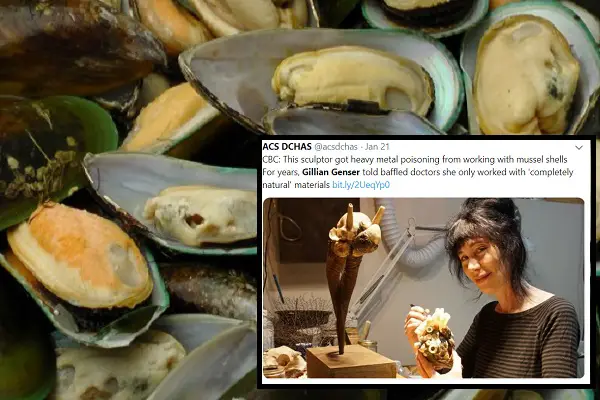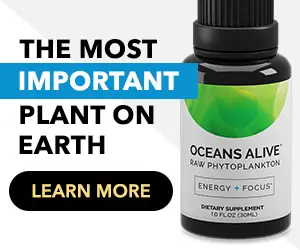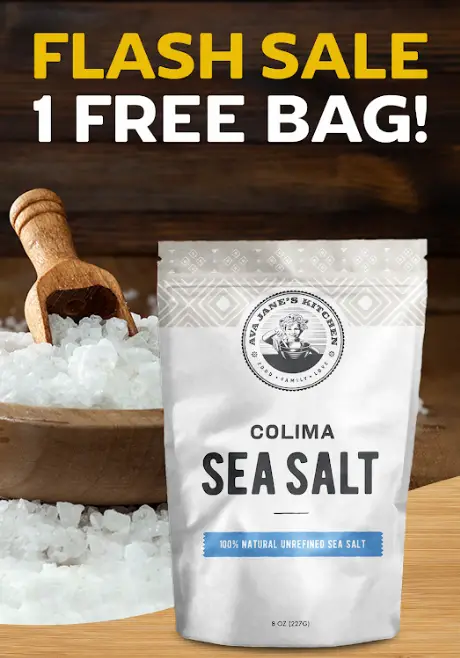
PHOTOS: Public Domain Pictures, Twitter
Toronto-based artist Gillian Genser wanted to work with only natural materials since the beginning of her sculpting career in 1991.
She used bones, corals, eggshells, dried plants, and other “dead things” to give these objects a second life as Adam from the Bible, or Lilith, or subjects of folklore. Everything was going well until she started using blue mussel shells in 1998. Unexpectedly to her, this natural material ended up giving her heavy metal poisoning and completely destroying her health and life, as was reported by Toronto Life.
To make her art sculptures, Gillian would go through shells bought in bulk, which were sourced from Atlantic Canada and sold in Toronto’s Chinatown. Every day, she would spend 12 hours sifting through thousands of shells.
Just a few months after starting working with mussels, Gillian started feeling ill with headaches and vomiting daily. She rushed to different doctors but none found any clues. Her symptoms worsened and added muscle aches and cramps to her struggles. This continued for 15 years.
In 2013, she was cleaning the vents that kept years worth of dust. That same day she suddenly felt so weak she could not stand.
Her mind was foggy, her speech blurry, her hearing decreasing, and quickly her body was engulfed in pain. She started losing her short-term memory, became disoriented, and confused. She was completely mentally distressed, and yet again, the doctors knew nothing.
“I believed I was dying, and…I had no idea [my art] was the thing that was killing me,” she told Toronto Life.
In 2015, she finally got the answer of what was causing her disease. She was diagnosed with heavy-metal poisoning with high arsenic and lead levels in her blood, which came from the mussels.
First Story! #art #toronto #sculpturehttps://t.co/TKae9sTM3K
— Gillian Genser (@GenserGillian) January 12, 2019
Mussels are filter-feeders; they filter out any toxins from the environment by pumping many liters of water every hour. The toxins then accumulate in their tissues. They can even be used to rate toxicity levels in water, and some countries do use them for that purpose.
Mussels that Gillian worked with may have come from contaminated with industrial waste waters—the same mussels are sold for food consumption.
“Metals can be absorbed through consumption, air or skin. I’d been exposed in every way,” Gillian wrote.
“My body was carrying a painful message about the poisoning that Earth is experiencing,” she continued.
Her story is an important warning message about the devastating effect pollution has on the environment and how careful we have to be when dealing with toxins in our food—even when it comes from natural sources.
Symptoms and Effects of Heavy-Metal Poisoning
Gillian’s own words summarize well what it is like to live after chronic heavy-metal exposure:
“I will never fully recover, and I continue to live with many neurological and metabolic symptoms. I have difficulty holding a thought…I struggle with autoimmune disorders, and there are many foods I can’t eat without becoming ill. I’m at a high risk for developing Alzheimer’s or Parkinson’s. Heavy metals have an affinity for the tissues of the nervous system, particularly the ones in the brain. I’m now 59 years old, and my quality of life is poor…When I look at [my sculpture], I feel grief—both for myself and our planet.”
Heavy Metals in Mussels And Other Shellfish
“People don’t realize how poisonous these things are,” a Professor specialized in invertebrates told Gillian.
Because mussels help filter out the toxins from the environment, when they are collected from a contaminated location, they carry a risk of heavy-metals or other contaminants poisoning.
Sadly, because of our polluted world, poor regulations, and often fraudulent food standards, it is hard to know the source of mussels and therefore their safety.
For example, in South Africa, there was a scientific warning in 2015 against eating mussels from the eThekweni coastline due to high sewage contamination of arsenic—which greatly increases cancer risk.
Mussels along the northwest coast of Washington were found to contain synthetic chemicals used in cleaning products, antibiotics, antidepressants, an opioid, and a chemotherapy drug.
Drug contamination is due to many people still flushing pharmaceuticals down the drain.
Blue mussels from various locations along the Norwegian coastline were contaminated by a high level of inorganic arsenic.
This kind of data is analyzed and collected by the Mussel Watch Program, which looks at over 150 contaminants at over 300 coastal sites.
Other high-risk shellfish includes oysters and scallops.
When consuming mussels or other shellfish, without testing each sample, it is hard to know the levels and kinds of contaminants that may be in them. It just may be a high-risk food that you need to be aware of and only consume in absolute moderation.
More on heavy metals…
Only These 3 Protein Powders Rated Free of Heavy Metals
Over 45 Chocolate Brands Contain Toxic Amounts of Lead and Cadmium
Drinking Fountains May Contain Over 80x “Safe” Limit of Lead. How to Protect Yourself…
Thanks for installing the Bottom of every post plugin by Corey Salzano. Contact me if you need custom WordPress plugins or website design.











